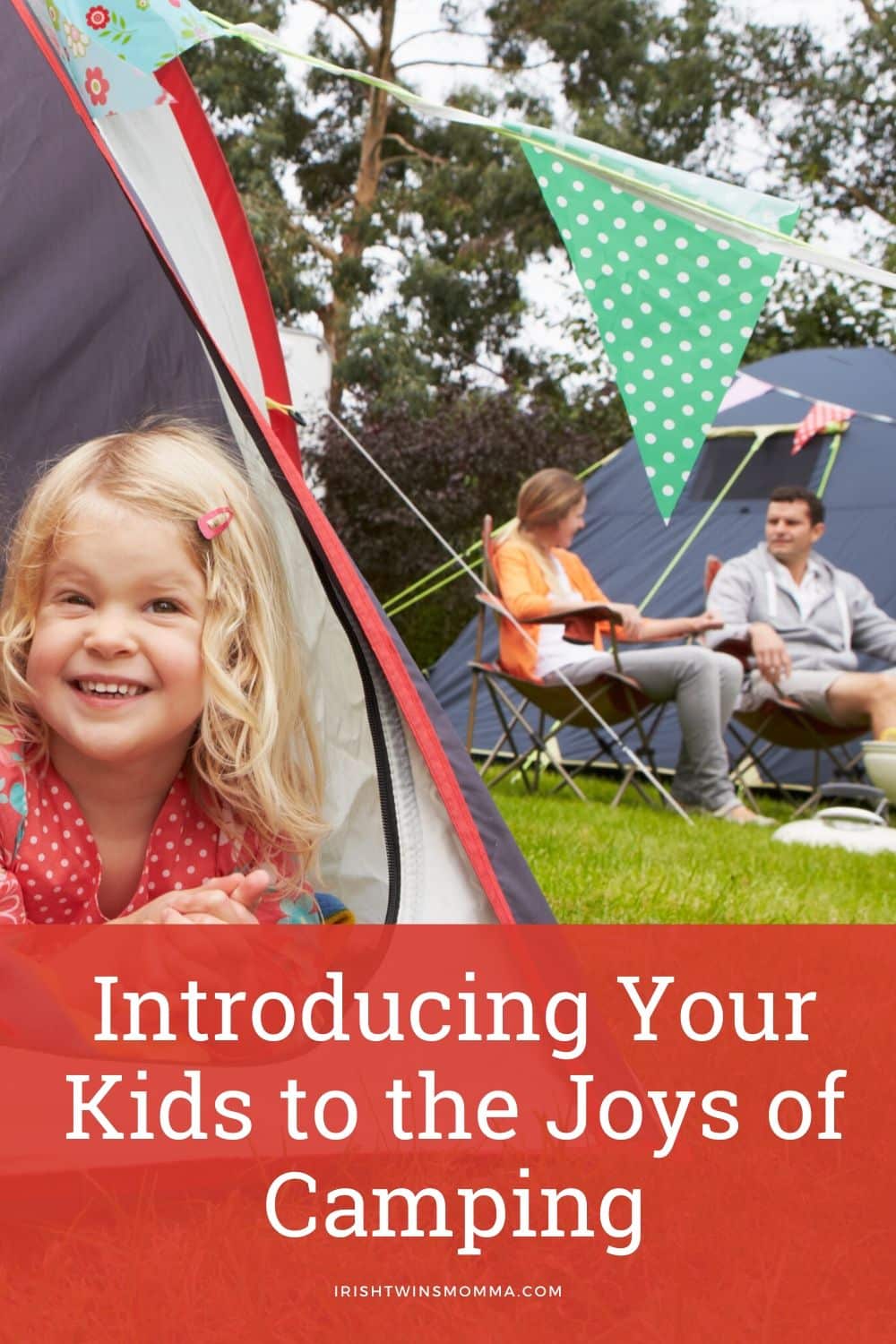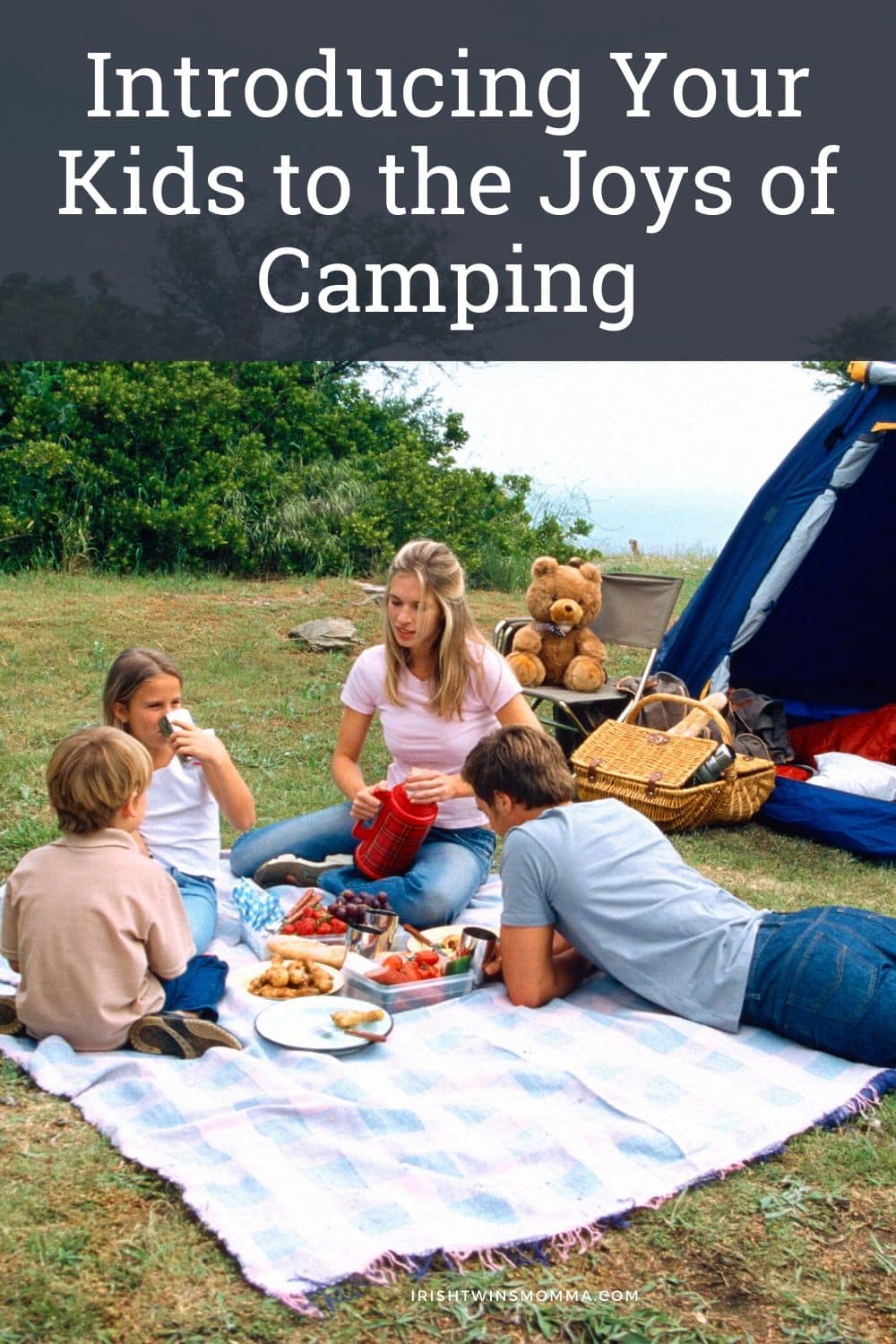This post contains affiliate links. If you click and buy, I may make a commission, at no cost to you. See my disclosure policy for more information.
Taking your kids camping for the first time can be a daunting task. Will they enjoy it or will they whine that they want to go home? And with so many potential hazards and things to worry about, will you be able to enjoy yourself at all? Here’s how to introduce your kids to the joys of camping.
Why go camping with kids?
Camping is an amazing activity to enjoy with kids. It will help them to be more active and to learn about the natural world, as well as being a fantastic family adventure. It’s also a great way for your family to connect and to get to know each other, especially if all your time is usually taken up with work and school.
The key to an enjoyable camping trip with kids is to be prepared and have the right equipment. By making your preparations in advance and considering all the factors, you can ensure that your first vacation under canvas will be a great joy for everyone.
Choose your equipment well
When selecting and shopping for camping gear, you should purchase camping gear specifically made for children. This will make camping easier and more enjoyable for them.
Kids camping gear can be found at any local sporting goods store or a department store. You can purchase sleeping bags, flashlights, clothing, and other camping gear that is made just for children. By purchasing kids camping gear, you will make the children feel more independent because they now have their own gear.
Make sure each child has sufficient waterproof clothing and extra clothes so you can cope with all weathers or if an accident occurs. Layering your children with clothing is another great idea as children get colder faster than adults, and if ever they become too hot they can always remove an item of clothing.
You should also provide each child with their own flashlight and a whistle (see safety tips below). Taking one or two powerful lanterns to illuminate the tent at night will be useful, particularly with younger children. Glow sticks make a fun alternative that kids love.
Choose your spot well
Once you have the kids camping gear purchased and sorted out, you should then think ahead and start planning the camping trip. You may want to choose a family campground where there are a number of activities that the children can enjoy.
It is advisable to be quite conservative in your expectations for this first trip, so choose a campground not too far from home. Getting stuck in traffic, having a long journey or a child who gets car sick will mean your exciting camping trip starts off on the wrong foot.
You should also choose an easily accessible location. You may want to choose a camping spot that is accessible by vehicle if your kids are relatively young. If you want to hike into the camping spot, keep the distance pretty short.
Also, remember that younger kids may not be able to carry all of their gear and food in, so you’ll end up with one very heavy pack if you’re not careful. Or making several trips to transport your supplies.
Choose a spot with easy access to water and the campground facilities or restrooms if there are any. That way you don’t have to walk too far to get what you need or in the middle of the night.
Entertainment
If there are no activities at your campground you can create your own. For example, hiking, wild swimming, nature walks, whittling wood, building a fire, or building dens.
Bring a pack of cards, some small toys or coloring books, and crayons for your child to play within the tent if the weather is bad. Try to encourage them to leave the electronics at home!
If you are going to a drive-up camping spot, you could take some more toys. Construction ground toys are great for campground play, and fishing nets plus a large plastic bowl or bucket will be useful if you are near water and would like to see what lives there.
Bring bats, balls, and other outdoor toys for lots of family fun. A blow-up kiddie pool and some blankets make a great spot to stargaze from too.
Food
Take a wide selection of snacks as the kids will likely be hungry all day long doing so much activity. Making up your own sealed snack bags with chopped carrots, raisins, sugar snaps, and other healthy treats will save you money and stop the temptation to buy junk foods while you are away.
Take foods that will cook easily on your camping stove or campfire such as beans, sausages, hot dogs, and potatoes to bake in foil. Prep and freeze some meals before you go such as chili or a casserole that can easily be reheated.
And don’t forget marshmallows, skewers, and s’ mores ingredients for the evening.
Safety
Teach your children to stay within eyesight, or if they are older to teach them to stay within earshot. You should also teach them to stay where they are if they get lost.
If your child is over the age of 4, they are old enough to be given a whistle that they can wear around their neck and be taught to blow the whistle if ever they are in danger or lost.
Campfires and s’ mores are a must when you take your kid’s camping. Be sure you choose a location that allows campfires, and that has a readily available water supply to put the fire out.
In the time leading up to your trip, teach your kids about fire safety. You should also teach them about insects, snakes, or bears if they may be a problem where you are camping.
When you get to the campground orient your child with the surroundings and tell him what to do if he gets lost. Help him to draw a camp map with landmarks and shelter located on it.
With the right equipment and proper planning, a camping trip with your family is the perfect way to build a closer family bond. With the right equipment and planning a family camping trip can become a memorable and enjoyable experience for everyone.
Sincerely,




Leave a Reply